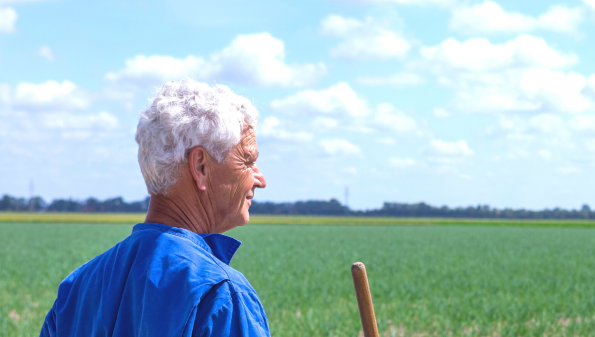Premiere: the Fellowship of the Holland Onion - part 2
In the second part (the Growing Season) of our new series of video clips 'The Fellowship of the Holland Onion' we see the continuation of the fascinating life journey of the Holland Onion. We experience the ritual of the care and attention with which onion grower Co van den Dries surrounds his young onion seedlings and plants.
Onions germinate slowly and also grow slowly. It takes an average of 30 to 35 days for a germinated seedling to reach the first above-ground 'arch stage'. This is so called because the onion seedling is then still stuck with its growing tip in its seed cap but also connected to its little root. That’s why the little seedling first emerges -like a round arch- above the earth. After three days the growing tip is then slowly showing itself and the flag leaf stage becomes visible.
So at the same moment that the world-famous Dutch tulip in the fields elsewhere has almost finished flowering, a new generation of Dutch onions proudly wave their flag leaves in the wind. That little tough onion stalk with its typically withered tip symbolizes successful germination. The young onion plant will become self-sufficient very soon now. After the formation of the 3 first, early roots, the first true leaf is created. The flag leaf will then soon die-off.
And then Co van den Dries can also fly the flag for a while. His millions of carefully planted onion seeds have all germinated beautifully and homogeneously. The bare onion field is slowly turning green. Long, straight lines with the first true onion leaves become visible in the field. But what about the moisture balance of the soil in the meantime? After a bone-dry spring, this is a major point of attention. In order to continue growing healthily, the onion crop needs a lot of moisture. Because after a number of warm, sunny days in a row, 15 mm of moisture quickly evaporates in an onion field.
Co is well aware of how small and vulnerable his onion crop is right now. And that there is still a long way to go. Because onions grow slowly in the beginning and need as much light, moisture and nutrients as possible, controlling weeds, as a major natural enemy, gets a lot of attention. In addition to the highly targeted application of soil herbicides, weeds that still manage to escape, are regularly removed with a hoe.
And then there's another plague. That annoying thunderfly, also called thrips, which - unnoticed - can cause great damage to the crop. That too is a major concern and requires careful crop control by personal monitoring every three days.
Driving rains after a mostly dry spring have resulted in a surface crust in the onion field. The crop suffers from this. With a camera-controlled hoeing machine, the soil is loosened extremely precise and made nice and airy again. The onion bulb gets a new growth impulse and can expand further
The onions thrive very well with all that care and attention, also according to the youngest generation of Van den Dries. Co can be proud. It will be a nice onion harvest.
